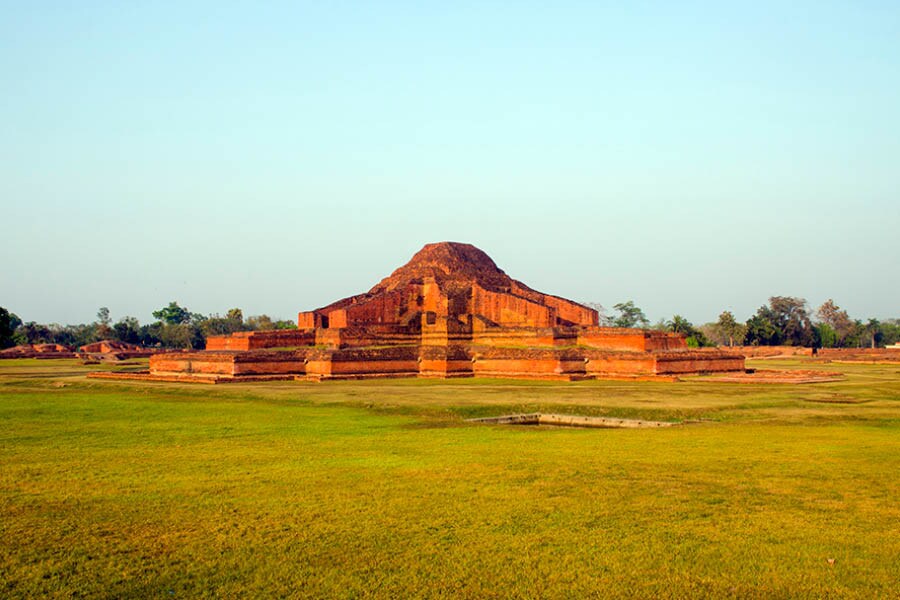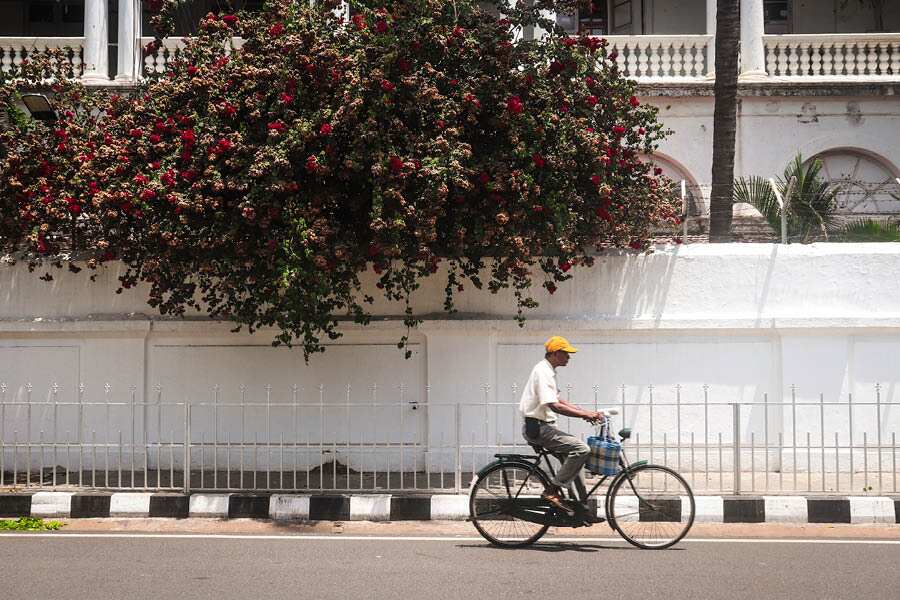For centuries, a 24-metre-high hill has dominated the landscape of Gangetic Bengal. It was located about 100km north of Rajshahi in present-day Bangladesh. Hills have never been a part of the absolutely flat floodplains of Bengal but this hill did stand and it was so prominent that the adjoining village came to be known as Paharpur (pahar is the Bengali word for hill). But it was not exactly a hill but a mound covering a massive historical structure.
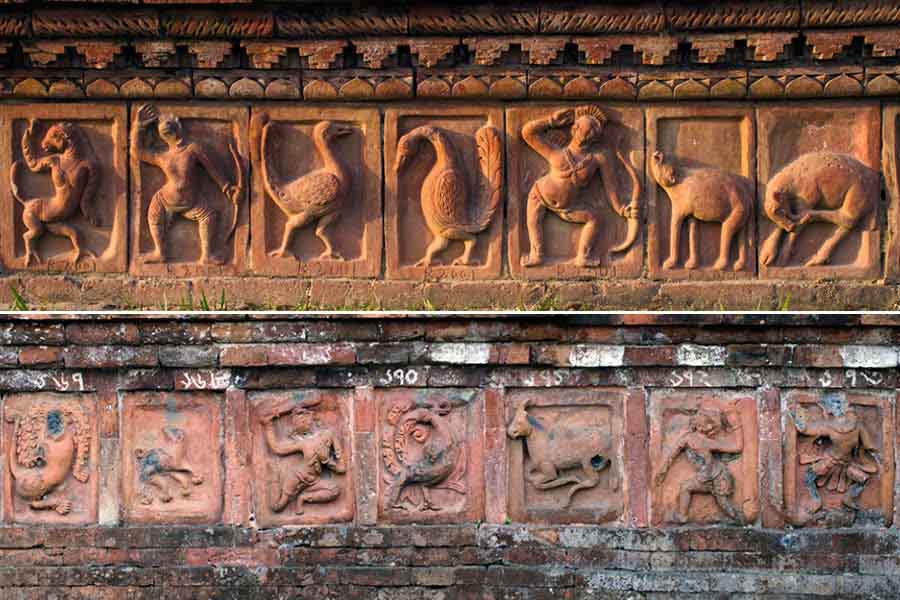
(Top) Replaced and (above) original terracotta tiles of Somapura Mahavihara.
Scottish surgeon, surveyor and botanist Buchanan Hamilton visited the mound during his survey in the early 19th century. Later, in 1879, Alexander Cunningham, often referred to as the ‘Father of Indian archaeology’, carried out a small dig at the mound. But it was only in 1923, a proper dig of the mound was carried out. The decade-long dig revealed a massive Buddhist monastery dating back to the 9th century CE.
Inscriptions on clay seals, found during the archaeological dig, revealed that the monastery was officially known as Somapura Mahavihara and was an initiative of the second Pala king Dharmapala (reign: 781-821). Archaeological evidence shows that the monastery reached its pinnacle during the 11th century CE after which a series of ups and downs followed and it was probably in the 13th century that the monastery was finally abondoned and forgotten.
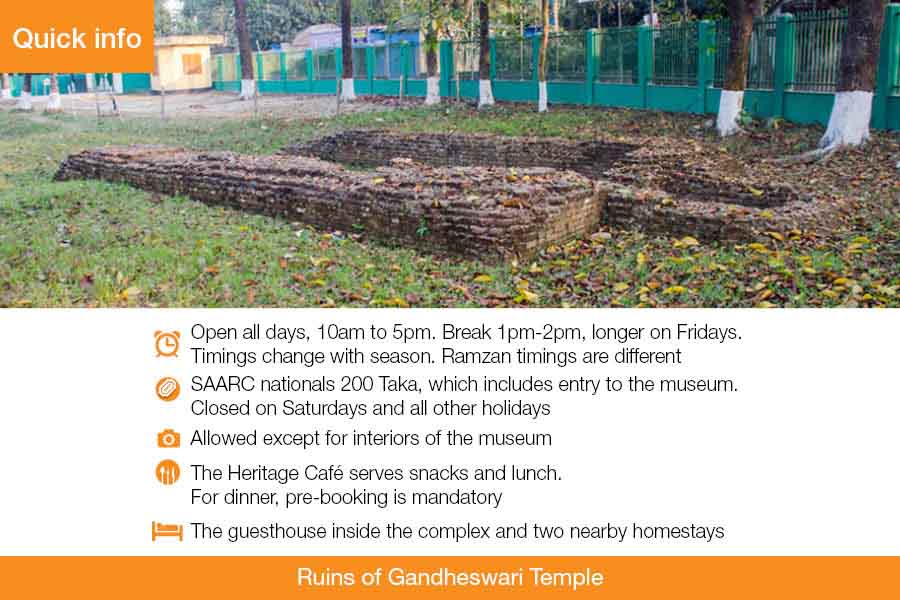
The gigantic establishment was laid out on a square plan with each side measuring 174 metre (approx.). The boundary was actually a series of 177 monastic cells used for the residence of monks. The entry was through the north and led to a huge complex dominated by a towering central shrine. The central site stands on a cruciform plan and has three gradually decreasing terraces with a present height of 21 metre. As the top part of the shrine has gone missing, its original height cannot be calculated. The structure is decorated with several terracotta panels. Most of these panels have been removed to several museums and are replaced with new ones. But a few of the original panels still remains.
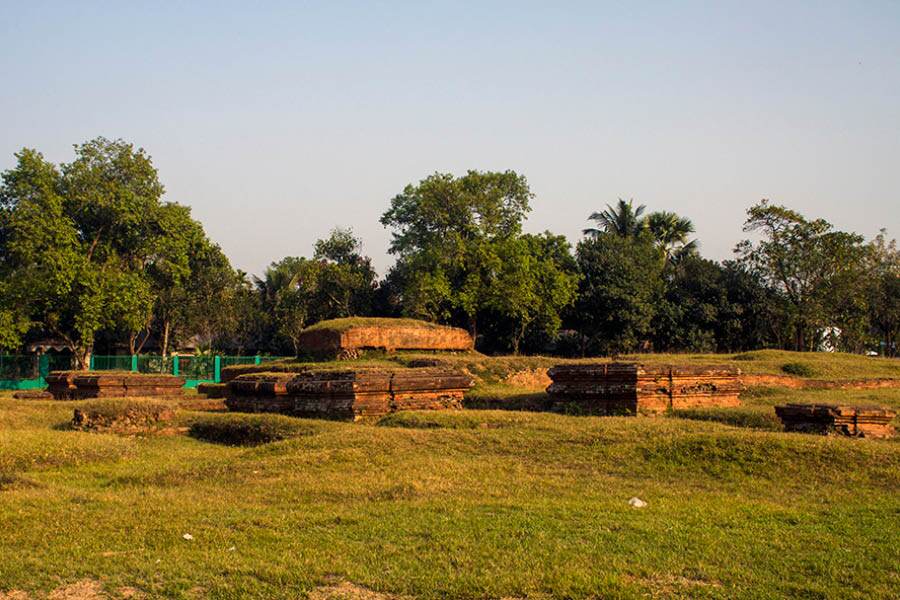
Among the other two archaeological sites in the complex is the Satyapir Bhita, located around 350m east of Somapur Mahavihara.
Apart from the central shrine, the courtyard also contains several other structures, which include the model of the central shrine. It is located east of the main shrine and just south of it are the five shrine. Remains of a stupa can be seen adjoining the south section of the main shrine. Apart from these the complex houses a number of votive stupas of various sizes and shapes along with structures of kitchen, masonry drain, and wells. These structures were constructed during different phases of occupation.
Since 1985 the Somapura Mahavihara is a UNESCO Heritage Site and is housed in a huge complex complete with a site museum, café, guest house and a couple of more archaeological sites. Among the other two archaeological sites in the complex is the Satyapir Bhita. It is located about 350m east of the Somapur Mahavihara and stands behind the site museum.
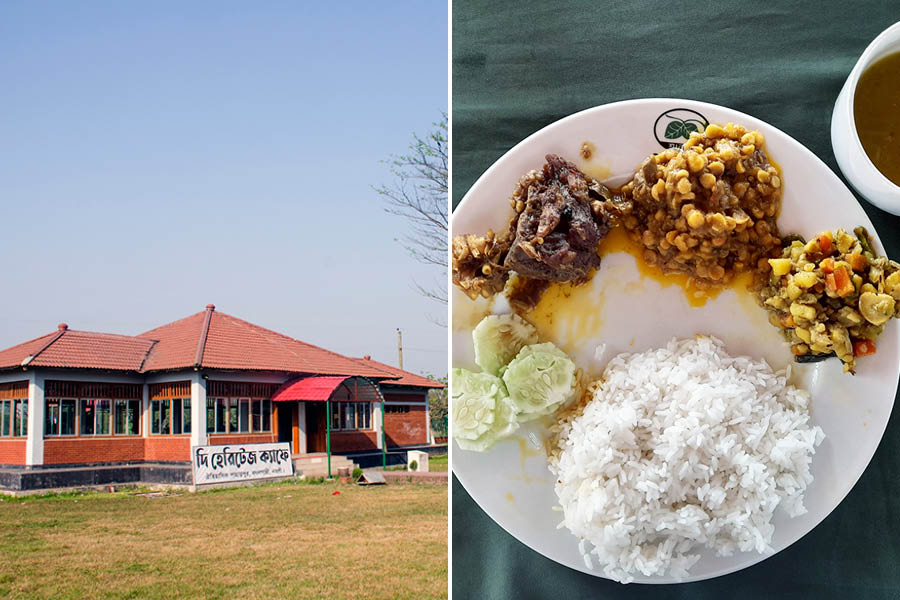
The Heritage Café and (right) the food it serves includes rice, ‘patla (liquid) dal’, mixed vegetables, ‘booter (chholar) dal’ with mutton liver, mutton bhuna with whole spices and cucumber salad.
The site once housed a temple of Tara and was surrounded by many votive stupas. It is contemporary with its larger neighbour but the name probably originated during the 16 or 17th century CE. The other site is the remains of Gandheswari Temple, located on the south east corner of the Somapura Mahavihara complex. The ruins are of a small shrine constructed during the Muslim period.
The complex also houses a site museum. Like the main shrine the museum also follows the cruciform plan. The entry is though the northern side and leads to the central hall serving as an introductory area and houses a model of the main shrine. Two of the three galleries house artefacts collected from the site. The western gallery houses artefacts collected from nearby archaeological sites.
The complex also houses a café by the name of Heritage Café and offers a host of local delicacies, which include meat cooked with whole spices, including whole garlic. The complex also houses a guesthouse, which is open to general public. The café, museum and the cottages of guesthouse are all surrounded by a beautifully laid out garden. The guesthouse provides a rare opportunity of staying inside a UNESCO Heritage Complex. It provides the opportunity of witnessing an amazing sunrise with the towering central shrine of Somapura Mahavihara, which still have a hill-like appearance.

The guesthouse provides a rare opportunity of staying inside a UNESCO Heritage Complex and waking up to an amazing sunrise in the backdrop of Somapura Mahavihara.
Package tour: Immersive Trails Global (https://www.immersivetrails.com) conducts a 5-day & 6-night package covering Somapura Mahavihara along with Mahasthangarh, Bogura, Rajshahi and the Bangladesh area of Gour
